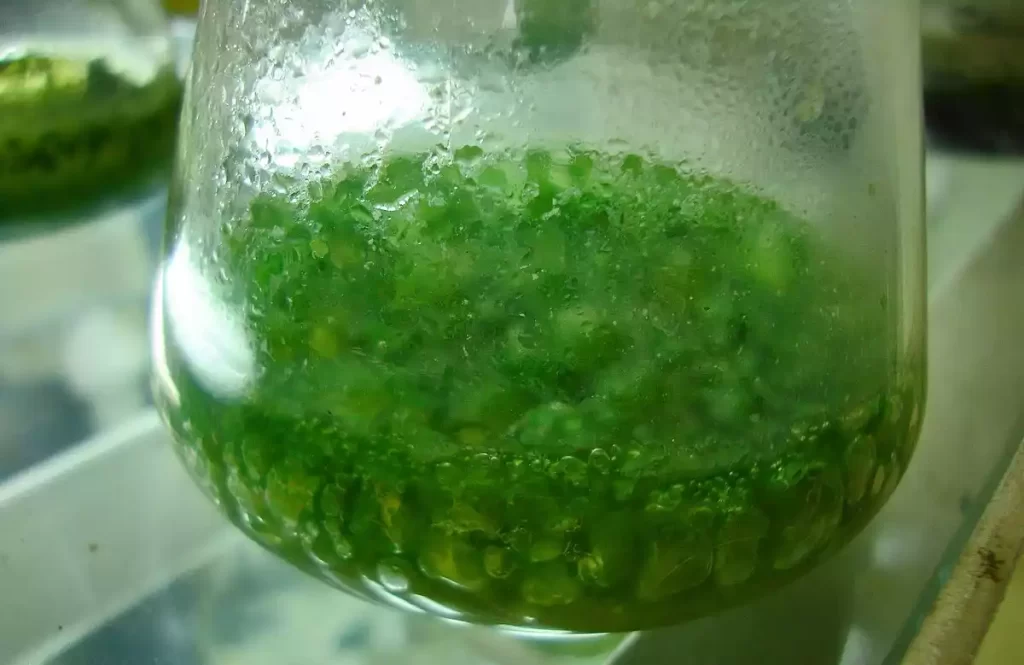Fertilizers play a crucial part in increasing the productivity of agriculture as well as in the search for sustainably-produced farming methods, Organic and Bio Fertilizer are emerging as environmentally friendly alternatives to chemical fertilizers.
While both are capable of improving fertile soils, the two are distinct in terms of composition, mechanism of action, as well as environmental impact. Knowing the differences between bio and organic fertilizers is essential to navigate the various options for farmers who want to adopt ecologically sustainable agriculture practices.
This study focuses on the main differences between these fertilizers and sheds an understanding of their distinctive properties and the implications they have in the modern world of agriculture.
What are Organic Fertilizers?
Organic fertilizers are natural fertilizers made from organic substances including manure from animals and compost, plant wastes, and various organic waste. These fertilizers are not processed and are a source of essential nutrients like potassium, nitrogen, phosphorus micronutrients, and nitrogen, in different amounts.
Contrary to chemical or synthetic fertilizers organic fertilizers can release their nutrients gradually as they degrade in a gradual and long-lasting source of nutrition for plants. They also aid in improving soil structure, improving microbe activity, and encouraging the long-term health of soil and fertility.
Organic fertilizers are an integral part of organic agriculture practices. They can be used to improve soils and encourage healthy, nutritious crops while keeping the environmental footprint to a minimum.

What are Bio Fertilizers?
Biofertilizers are solutions that contain living microorganisms like bacteria or fungi and, are applied to seeds, plants, or soil to improve the availability of nutrients by encouraging biological processes.
Microorganisms form symbiotic or associative relations with plants, helping to mobilize nutrients specifically nitrogen and phosphorus as well as potassium, which makes them more easily accessible and utilized by plants.
Biofertilizers can include nitrogen-fixing bacteria like Rhizobium and Azotobacter, phosphate-solubilizing bacteria such as Bacillus and Pseudomonas, and mycorrhizal fungi.
They aid in sustainable agriculture by increasing the fertility of soil by increasing the absorption of nutrients and decreasing the need for chemical fertilizers made from synthetic chemicals. Biofertilizers play a vital role in promoting the growth of plants and health by utilizing natural processes, thus promoting the environment and sustainable practices for farming.

Similarities Between Organic and Bio Fertilizer
Organic and bio-based fertilizers share many similarities, despite their distinct differences:
Derived from Natural Sources: Both bio and organic fertilizers are made from natural resources. Organic fertilizers are created from organic matter such as manure, compost, or plant wastes, bio fertilizers include living microorganisms like bacteria and fungi or algae.
Promote Soil Health: Both types are beneficial to improve the health of soil. Organic fertilizers help improve soil structure, enhance the activity of microbial organisms, and increase organic matter, while bio fertilizers support beneficial microorganism populations and improve soil biodiversity and fertility.
Slow release of nutrients: Both kinds of fertilizers typically offer nutrients to plants in a slow manner. Organic fertilizers can release nutrients slowly when organic matter is decomposing and biofertilizers assist in the release of nutrients via natural processes, which ensure an ongoing intake of plant nutrients.
Eco-friendly: Both organic and biofertilizers are regarded as eco-friendly alternatives to chemical fertilizers that are synthetic. They encourage sustainable farming practices, reducing the need for chemical inputs, while reducing the pollution of the soil and water as well as assisting in maintaining the ecological balance.
Contribute to Sustainable Agriculture: Both fertilizers support sustainable agriculture by improving soil fertility, increasing nutrient availability to plants, and encouraging healthy growth of crops without causing lasting damage to the environment.
Support Soil Microorganisms: Both kinds of fertilizers help to support beneficial soil microorganisms. Organic fertilizers stimulate the activity of microbial species and increase diversity within the soil. Likewise, biofertilizers contain specific microbes to increase the availability of nutrients and help plants with the uptake of nutrients.
Comparison chart of Organic and Bio Fertilizer
Here’s a key comparison chart highlighting the differences between organic fertilizers and biofertilizers:
| Aspect | Organic Fertilizers | Biofertilizers |
|---|---|---|
| Origin | Derived from organic matter like plants, animals, or their byproducts. | Contain beneficial living microorganisms such as bacteria, fungi, and algae. |
| Nutrient Release | Nutrients are released slowly as organic matter decomposes. | Nutrients may be released gradually through microbial activity. |
| Nutrient Types | Provide a wide range of macro and micronutrients. | Primarily enhance nitrogen, phosphorus, and potassium availability. |
| Soil Health Improvement | Improve soil structure, aeration, and water retention. | Enhance soil microbial activity, fostering a balanced soil ecosystem. |
| Nutrient Availability | Nutrients can be available over a longer period. | Microorganisms facilitate nutrient release, aiding in plant uptake. |
| Environmental Impact | Generally more environmentally friendly, reducing the risk of nutrient runoff. | Sustainable and eco-friendly, decreasing reliance on synthetic fertilizers. |
| Application Timing | Applied before or during planting, with some releasing nutrients immediately. | Often applied before planting or during seeding to establish microbial colonies. |
| Role in Plant Growth | Provide direct nutrients for plant growth. | Promote nutrient uptake, root development, and plant resilience through microbial interactions. |
| Types of Examples | Compost, manure, bone meal, seaweed, etc. | Nitrogen-fixing bacteria, phosphate-solubilizing bacteria, mycorrhizal fungi, etc. |
| Cost | Generally affordable but may require a more significant initial investment. | This may lead to long-term cost savings by reducing the need for synthetic fertilizers. |
| Sustainable Agriculture | Contribute to sustainable farming practices. | An essential component of sustainable and eco-friendly agriculture. |
This comparison chart highlights the distinctions between organic fertilizers, which are typically derived from organic matter and provide a wide array of nutrients, and biofertilizers, which contain beneficial microorganisms that enhance nutrient availability, promote soil health, and are particularly suited for sustainable agricultural practices.
Importance of Fertilizers in Agriculture
- Nutrient Supply: Fertilizers are vital nutrients such as nitrogen, phosphorus, as well as potassium to ensure the best growth and development of plants.
- Increased Yield: A regular fertilizer application improves the yields of crops, resulting in increased yields of fruits, vegetables, and even grains.
- Fertility of the Soil: Fertilizers help maintain and increase soil fertility by replenishing the levels of nutrients that are depleted by crop cultivation.
- Qualities of the Crop: Proper nutrient balance with fertilizers can improve the nutritional value of products and can affect the taste, nutritional value, and market value.
- Economic impact: Fertilizers contribute to the sustainability of agriculture by increasing production and, in turn increasing the income of farmers.
Which is better organic fertilizer or biofertilizer?
The decision between organic fertilizer and biofertilizer is based on the specific needs of your farm and objectives. Organic fertilizers, which are derived from natural sources, such as animals and plants, provide the slow release of nutrients, enhance soil structure, and help maintain the long-term health of soil.
However, biofertilizers contain beneficial microorganisms that enhance the availability of nutrients, improve the uptake of nutrients by plants, and help sustain farming. It is important to note that the “better” option varies based on factors like the type of crop, the soil conditions, and environmental concerns.
In many instances it is possible to combine biofertilizers and organic fertilizers could be a viable option for improving plant growth while ensuring the fertility of soils as well as ecological equilibrium.
Use Cases and Application
Organic Fertilizers:
- Crop Cultivation: Used in various crops, including fruits, vegetables, and grains, to provide slow-release nutrients for sustained growth.
- Soil Improvement: Applied to enhance soil structure, water retention, and microbial activity, promoting overall soil health.
- Composting: Utilized in the creation of compost, contributing to waste recycling and nutrient-rich soil amendments.
Biofertilizers:
- Nitrogen Fixation: Applied to leguminous crops like soybeans and peas, where nitrogen-fixing bacteria enhance soil nitrogen content.
- Phosphorus Solubilization: Used to enhance phosphorus availability for plants, particularly beneficial in phosphorus-deficient soils.
- Mycorrhizal Association: Applied to establish symbiotic relationships between plants and fungi, improving nutrient absorption and water uptake.
Advantages of Organic and Bio Fertilizer?
Organic fertilizers have many advantages since they originate from nature, such as animals and plants. They improve soil structure, encourage retention of water, and promote beneficial microbe activity.
Organic fertilizers are slow to release nutrients. delivering steady and balanced nutrition for plants while improving the overall health of the soil.
Biofertilizers, containing beneficial microorganisms, bring unique advantages. They aid in the absorption of nutrients by plants, increase the amount of nutrients available in the soil, and help in the growth of a strong root system.
In addition, biofertilizers encourage sustainable farming practices by reducing the use of synthetic chemicals and supporting eco-friendly farming practices.
In general, organic as well as biofertilizers are essential to helping to promote healthier crops, increasing soil quality, and promoting sustainable and environmentally friendly agriculture practices.
Disadvantages of Organic and Bio Fertilizer?
Organic fertilizers are not without drawbacks, like the slower absorption of nutrients variations in nutrient content, as well as issues related to bulkiness and transportation because of their composition of organic matter.
In addition, organic fertilization might require a longer period of period before showing visible changes in plant growth in comparison the synthetic fertilizers.
Biofertilizers have their drawbacks, like their specificity to specific plants, their sensitivity to environmental conditions, and their limited shelf time. Biofertilizers’ effectiveness can be affected by factors such as temperature as well as pH and soil conditions, making their use more complicated than conventional fertilizers.
Even with these disadvantages, utilized with care and in conjunction with fertilization techniques organic and biofertilizers could help significantly in sustainable and environmentally-friendly farming practices.
While bio and organic fertilizers are similar they also have distinct characteristics in regards to composition, modes of action, as well as the specific benefits they bring to the health of plants and soils.
Knowing the differences and similarities is crucial for farmers to make informed choices regarding the use of these fertilizers in their agricultural practices.
Conclusion
Organic and biofertilizers can be a valuable alternative to chemicals used in modern agriculture. They provide sustainable, eco-friendly solutions to improve the health of the soil as well as increase the availability of nutrients, and help to increase the growth of plants.
Although they have distinct advantages and drawbacks, however, the wise use of these fertilizers can lead to more environmentally sustainable and sustainable practices in agriculture.
Farmers should take into consideration their particular needs and goals to make educated decisions regarding fertilizer options, which ultimately lead to improved crop yields and sustainable farming practices.
